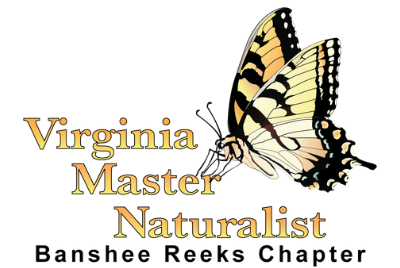Get your free trees! – Stream buffer planting
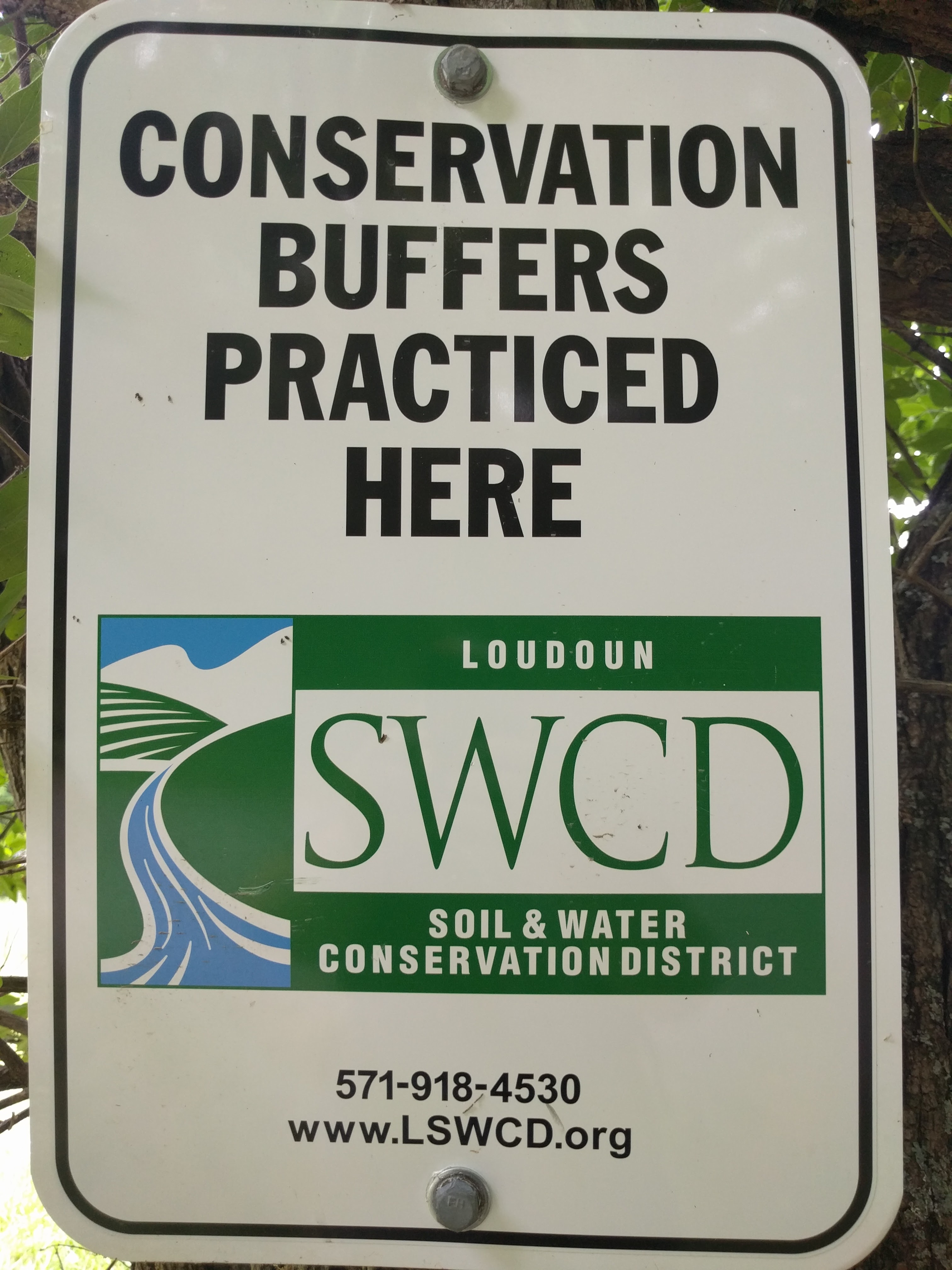
One of the places that we visit frequently is a private 370 acre park, called Horsepen Run. It’s part of the Countryside HOA, so to visit you need to be part of the HOA or a guest of a member of the HOA. It’s a wonderful property sitting on the Potomac River and abutting Algonkian Park. It’s full of a variety of different habitats, including meadows, wetlands (with vernal pools), and mature forest. There is a good variety of birds, butterflies, herps (Loudoun Wildlife Conservancy has held a couple herp walks there in the past), and mammals (including possible sightings of bobcats!).
As the name implies, Horsepen Run contains a watershed that runs into the Potomac. A little over a year ago, the HOA took advantage of a fantastic program to do a riparian buffer planting. Allison had attended a seminar like this one and presented the idea to the HOA. In the early spring, after some deliberation and meeting with the Loudoun Soil and Water Conservation District experts, a plan was put together. In the late spring of 2015, the HOA paid (and was fully reimbursed by the county through the stream buffer program) a landscaping company to come in and plant 156 trees:
- 19 Hackberry
- 24 Black Gum
- 24 River Birch
- 18 Sweet Bay Magnolia
- 12 American Hophornbeam
- 12 American Hornbeam
- 12 Redbud
- 12 Blackhaw Viburnum
- 13 Loblolly Pine
- 10 Eastern Red Cedar
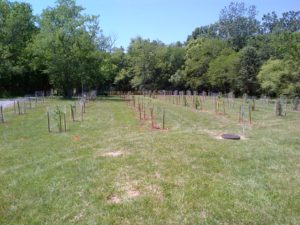
Buffer Stream Planting (day 1) at Horsepen Run
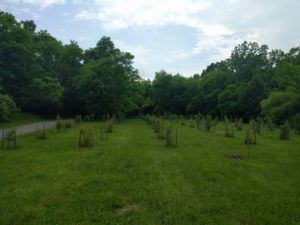
Trees – a year later
The trees that were chosen are all native to our area and as such provide a lot of value in terms of wildlife. Allison added some labels (laminated to protect them from the weather) to some of the trees that described the tree species and what benefits it provides to wildlife.
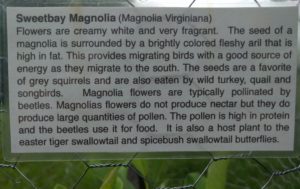
Sweetbay Magnolia sign
As you may recall, that summer of 2015 was hot and pretty dry, so watering needed to be done to help the trees through their first year. A pump and a really long hose allowed us to pump the stream water to take care of the tree’s needs. The first summer we also had to add a little extra dirt to some of the trees, but the watering was the bulk of the first year care.
As the winter came, we worried when the big heavy snow came that the trees wouldn’t handle the weight, but they did fine. The program requires that a year later that more than 75% of the trees are still alive – we met that easily with more than 95% surviving the first year. The trees came with a warranty, so for the small number of trees that didn’t survive (some just didn’t ever really take to their new home), the vendor replaced them. So in the spring, we got a few new trees and added a few new species (Chestnut Oak, Pin Oak and Tulip Poplar) to our burgeoning forest.
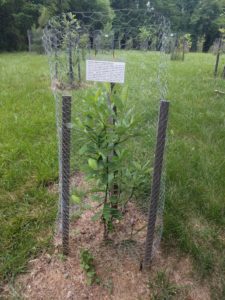
Sweetbay Magnolia a year later
As summer approached, some of the trees were out-growing their deer fencing and needed some weeding, so a few volunteers have replaced a couple dozen deer fences and weeded about a third of the trees so far. We hope to weed the rest in the next couple weeks. Fortunately, there has been good rain for the spring and early summer, so we haven’t had to manually water them yet this year. We’re hoping that by the end of the summer, we won’t have to do much more maintenance at all.
We’re very excited about the benefits to water quality and the benefits to local wildlife of converting what was once just a field of turf grass into a forest of beautiful native trees! It is likely that the program will be offered next year if you want to get some trees of your own and help out with water quality. You can visit the Loudoun Soil and Water Conservation District website for more information.
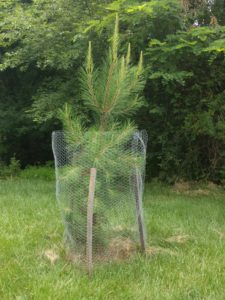
Loblolly Pine a year later
